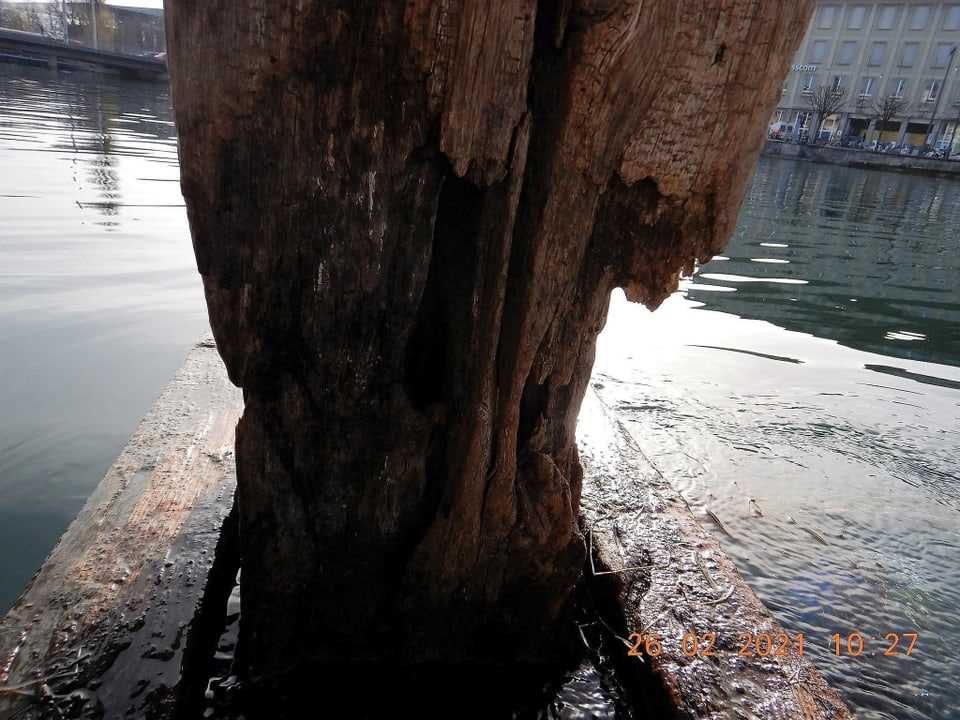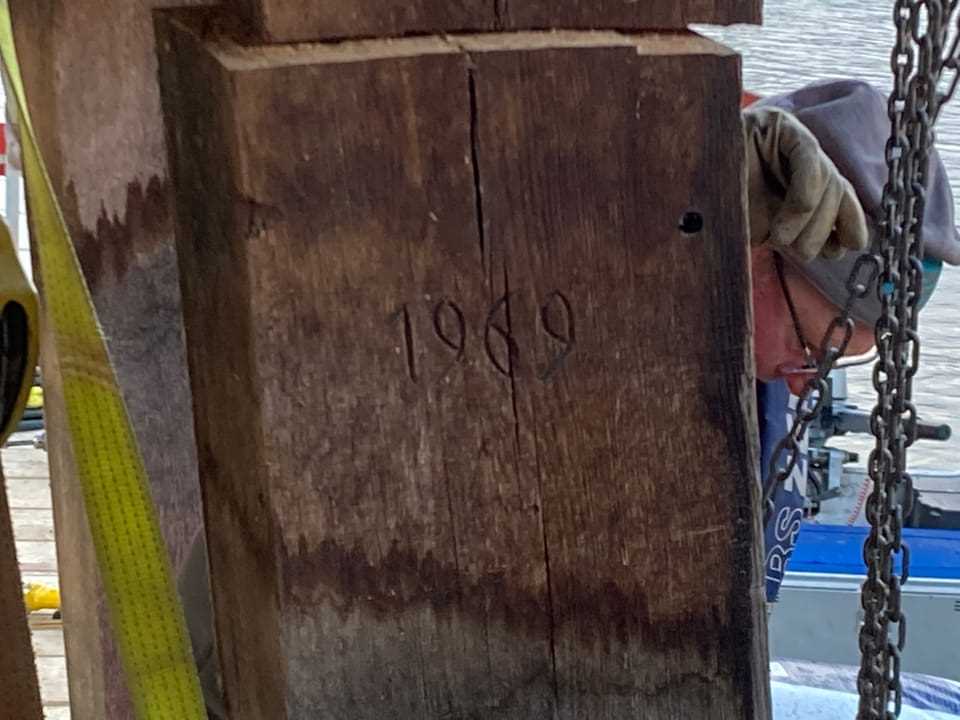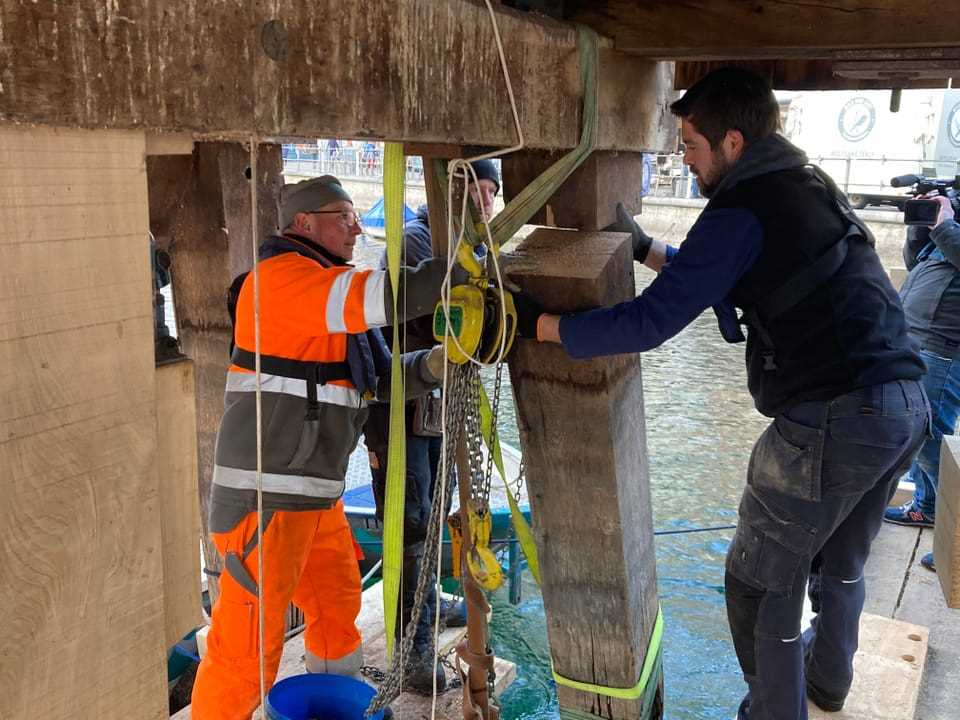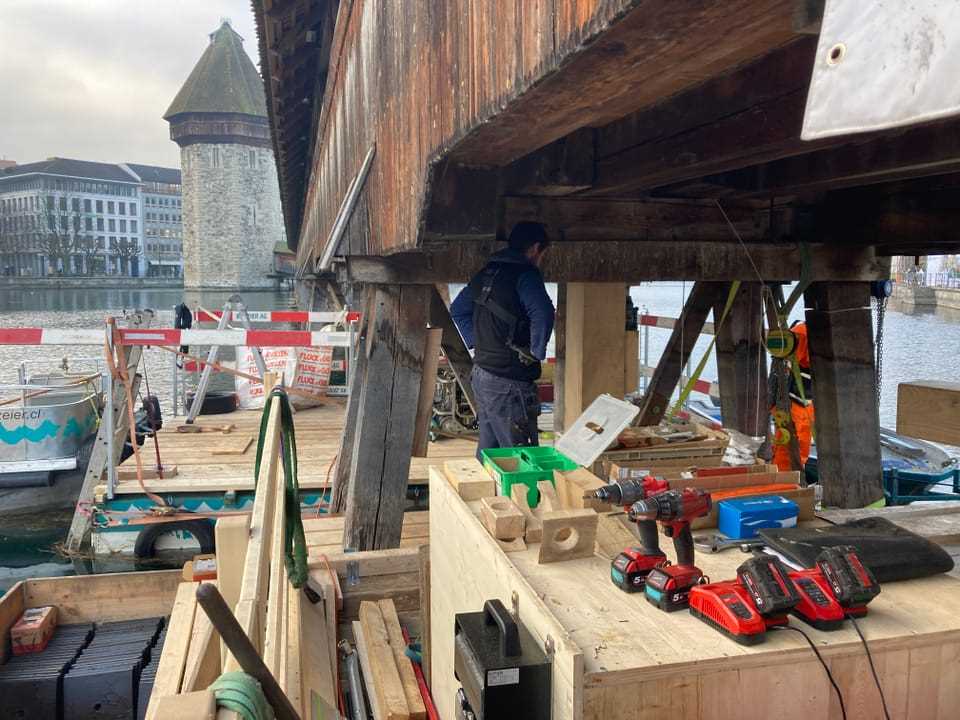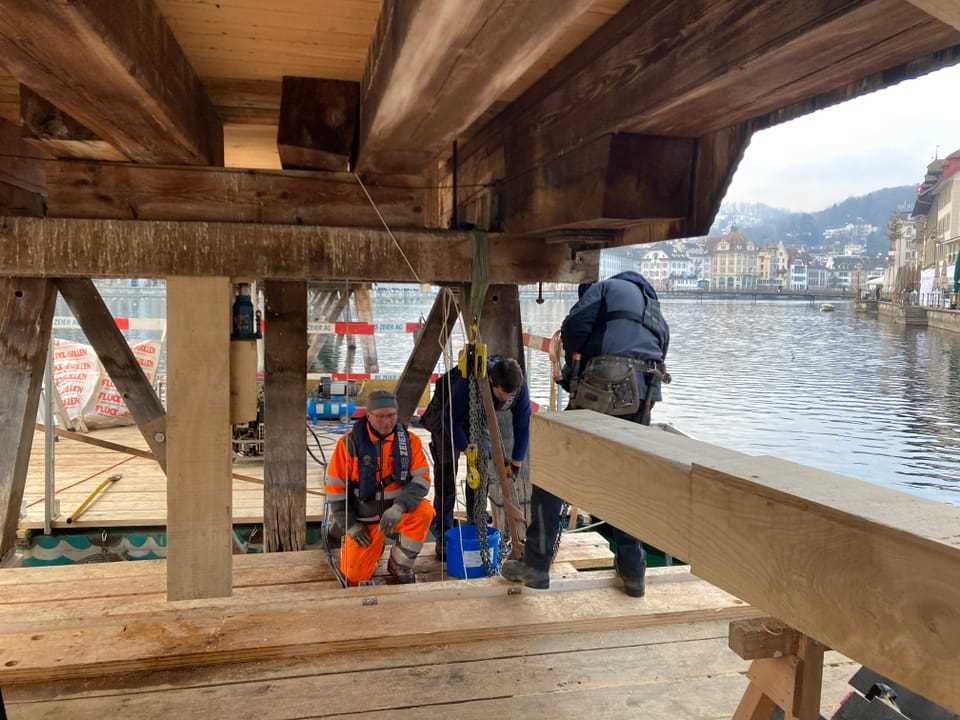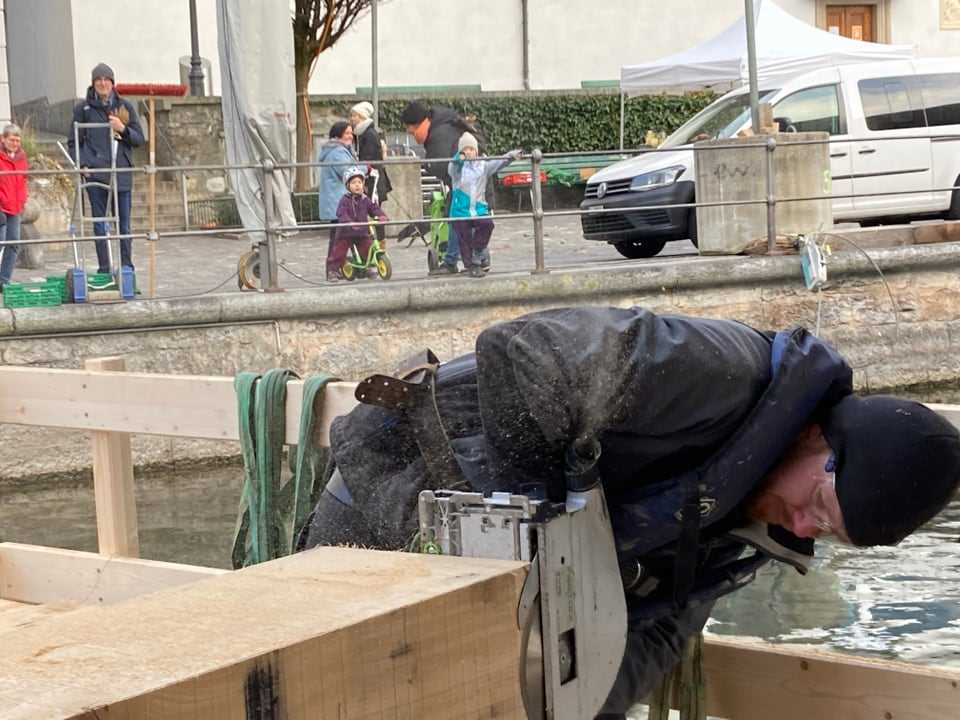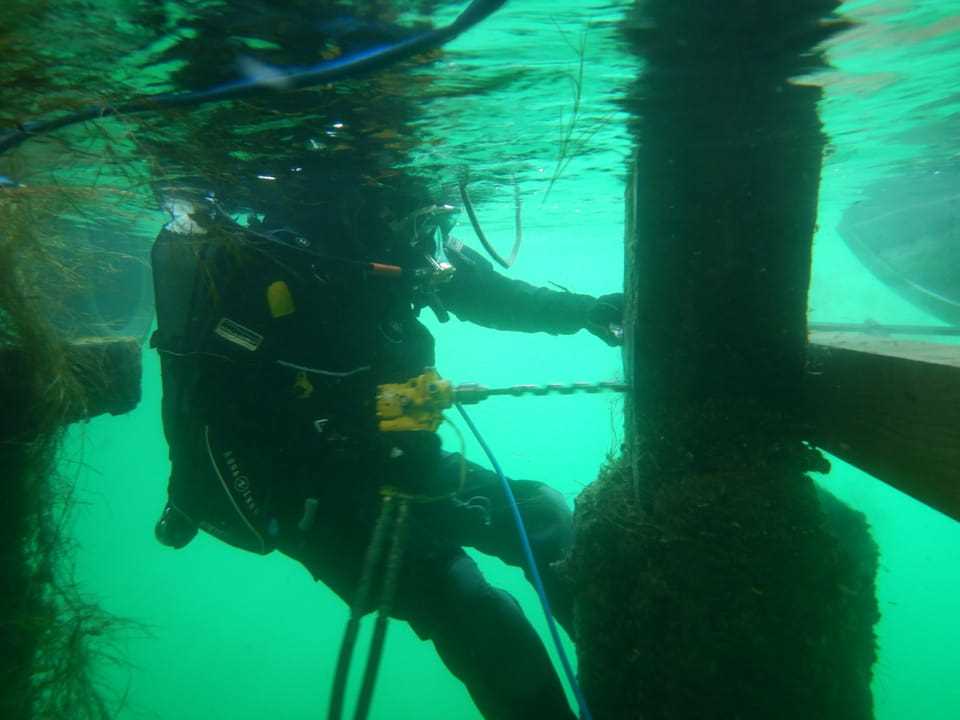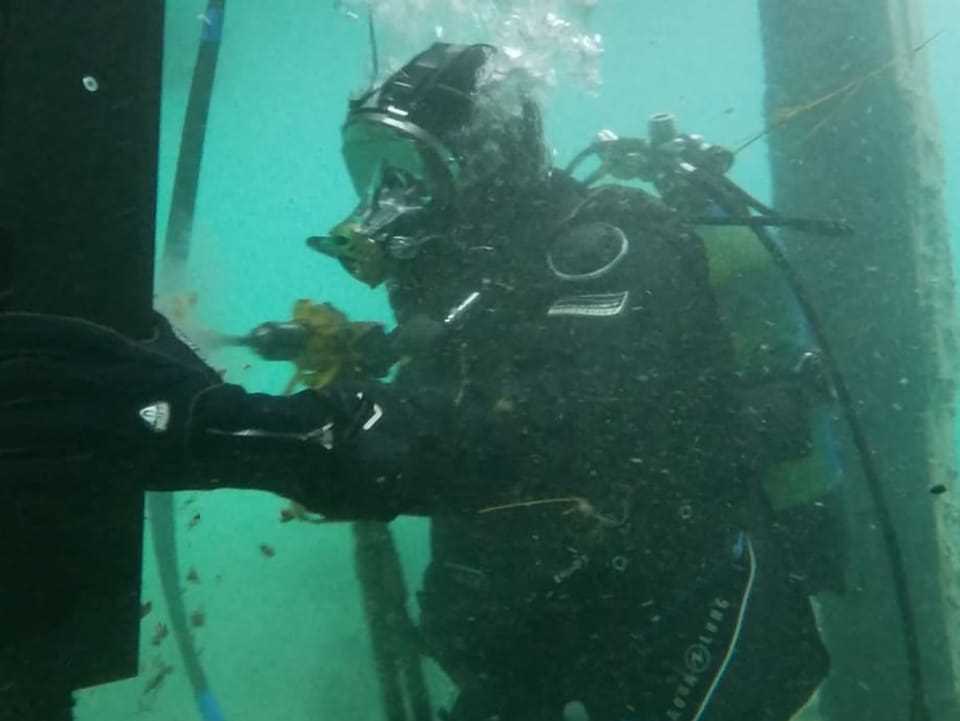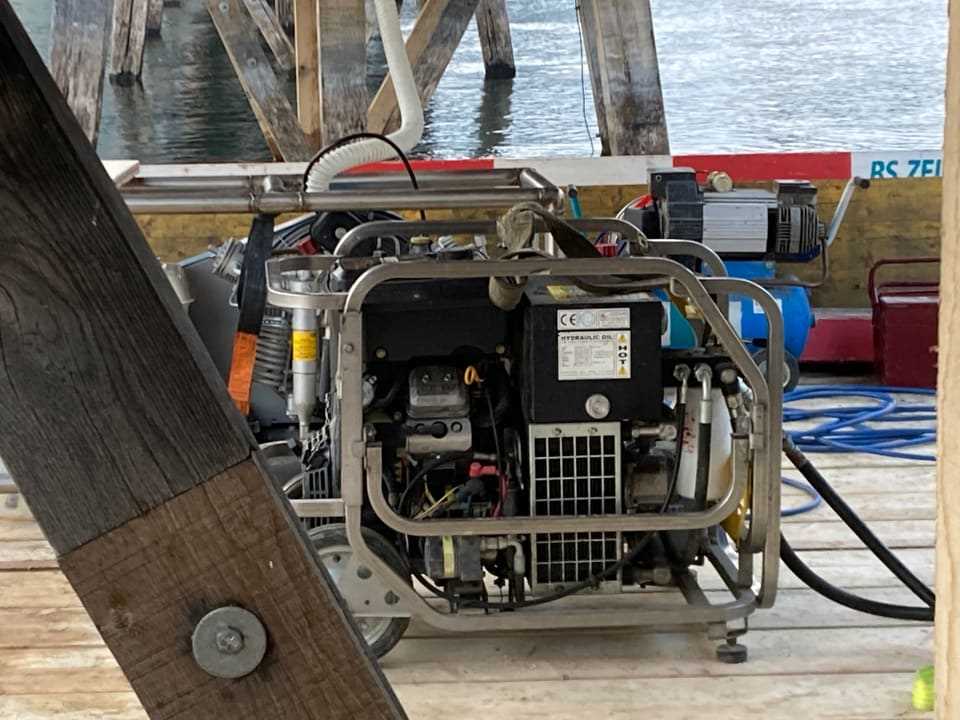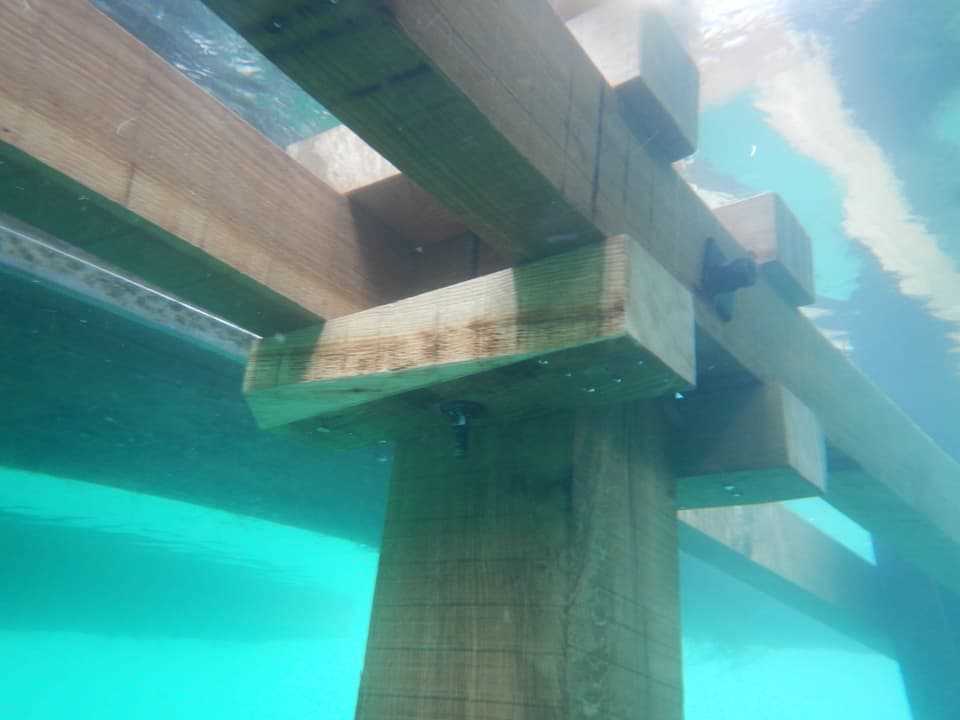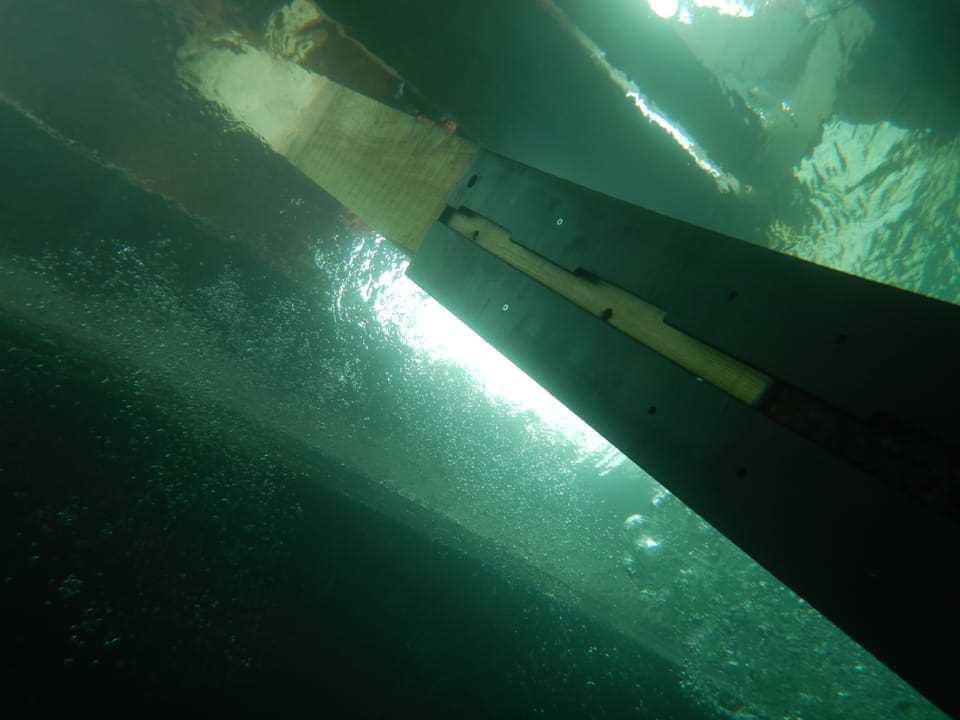contents
The wooden supports of the Chapel Bridge have become rotten. Specialists dive down with underwater saws for renewal.
It is one of the most photographed subjects in Lucerne – yes, in Switzerland: the Chapel Bridge with the water tower. The view of Lucerne’s landmark is a little different than usual at the moment. A platform floats under the bridge. Six people work on it, sawing, measuring and dipping.
Legend:
The floating work platform is located directly under the Chapel Bridge. This is where people work – and dive.
SRF/Raphael Prince
In concrete terms, three of the 27 supporting structures standing in the water will be replaced during the ongoing maintenance work. The wooden poles are showing signs of age and could break. The city of Lucerne discovered this during one of the regular control dives. The city owns the bridge and is responsible for its maintenance.
Working above the water…
Replacing three supporting structures – so-called yokes: That sounds easier than it is. For project manager Roman Häcki from the Zeier company responsible, there are various challenges: “It is crucial that we can take all the weight off the rotten posts before they are sawed out”. It’s not that easy, since people can always walk on the bridge during all the work.
communication crucial
The biggest challenge is working under water. Two divers are working at the same time. Roman Häcki: “Communication and agreement between the divers and the workers at the top is very important. The underwater work has to be very precise. It’s very difficult and we can’t really help from above.”
… and under the water
Underwater chainsaws and drills are used. Since these cannot be powered by electricity in water, a hydraulic motor that is operated with oil is required.
It works best when we have a lot to do and are constantly on the move.
Stefan Waser is one of the two divers. The dives are long – one can last up to an hour. “This is a very unusual task for us. One that can also be strict.” One is well equipped against the cold, with a waterproof suit and neoprene gloves. Nevertheless: a long time in 6 degrees cold water is already hard. “It works best when we have a lot to do and are constantly on the move.”
Less current in winter
The current work is costing the city CHF 170,000. Why are these actually carried out in winter? Project manager Markus Sigrist from the city of Lucerne: “In winter, the water is calm and stable. It’s better than spring or summer when the current can be very strong.” The current work will last until mid-February – at the latest by the beginning of carnival (if there is a carnival) it must be finished.

